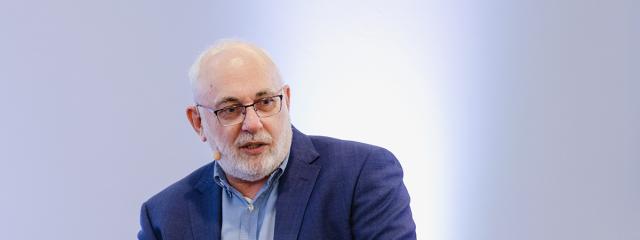Inside the BIS Toronto Innovation Centre with Miguel Díaz
The Bank for International Settlements (BIS) recently announced the launch of its first Innovation Hub Centre in the Americas, located in Toronto, Canada. The centre is focused on developing the basic infrastructure needed to enable new technology and innovation in the financial system.
During The 2024 SUMMIT, Jon Purther, Director of Research at Payments Canada, sat down with Miguel Díaz, Head of the Toronto Innovation Hub Centre at the BIS, to discuss the new Hub and the projects it is focused on.

Head, Toronto Innovation Hub Centre
Bank for International Settlements
Can you talk about the role of the Bank for International Settlements (BIS) and the Innovation Hub?
The BIS is the central bank of the central banks, providing services to central bankers. Ten years ago, we helped central banks distribute their reserve management, develop research on implementing monetary policy and more. But with the exponential evolution of technologies, this has changed significantly, as has the role of the central banks. So four years ago, the BIS decided to create the Innovation Hub — the technology arm of the BIS.
The BIS Innovation Hub has three mandates. The first is to identify the technology that could significantly impact financial systems and the trends that could challenge their financial stability. The second is to create public goods that can be used and replicated in different jurisdictions. The third is to generate community among central bankers to enable them to keep their infrastructures up-to-date through collaboration and knowledge-sharing. To fulfill these mandates, the BIS created seven centers around the world; four in Europe, two in Asia, and one in the Americas, which just opened in Toronto. The objective is to gather information from these different regions and see how we can put the pieces together to help accelerate innovation in financial services.
When you think about the BIS Innovation Hubs around the world, what excites you the most? What are some of the key projects that stand out?
The Hub has so much going on. We have 27 ongoing projects and 20 that have already been finished. These projects are happening in six different areas: next-generation financial market infrastructures, CBDCs, open finance, sub-tech/rec-tech, cybersecurity and green finance.
That being said, there are a few projects in the Hub’s portfolio right now that I’m especially excited about. The first is Project Mandala, which focuses on automatic solutions using smart contracts to generate compliance from an AML-CFT perspective. Then there’s Project FuSSE (fully scalable settlement engine), which is basically a building block that could allow faster payment systems to operate with super scalability in the backend. Project Nexus is another one, which enables cross-border transactions among faster payment systems. Lastly, there’s Project Agorá, which leverages technologies like tokenization to replicate the functionality of settlement.
Can you tell us about the Innovation Hub that just opened in Toronto? What is on your task list for the next 12 months?
Our task list is quite long, but our priority is to start collaborating with Canadian fintechs and traditional financial institutions to identify projects that might serve the community from a Canadian perspective. In terms of specific projects, Project FuSSE is high on our list. We’re eager to implement it so that other jurisdictions can start building upon its functionality with new modules.
We’re also thinking about how to make the payment supervision process more efficient. With the recent influx of small banks and PSPs, we have a lot more players in the ecosystem than we used to. We’ve also seen an increase in regulations that have been put in place. However, the number of supervisors has remained the same, meaning the same teams who were supervising the 50 banks are now supervising those 50 banks plus thousands of new PSPs. At the Innovation Hub, we’re considering how support from AI could help supervisors uncover cost savings and efficiencies in their processes.
How can interested organizations get involved in the work the Innovation Hub is doing?
We have a project-based approach to working with both public and private entities. First, we identify projects that might be useful for the communities. Then, we open up a call for entities interested in participating. Based on the submissions, we analyze the potential contribution and whether this would be a positive synergy for everyone before taking the final step to solidify a partnership. People can also participate by sharing information and reports and opening up community discussions.
Given your experience at BIS and the Bank of Mexico, what are some of the innovative capabilities you've seen from payment systems around the world? What are some lessons we can learn from other jurisdictions?
I think it’s extremely valuable to identify the pieces that can be replicated from different jurisdictions. For example, Mexico has a faster payment system that enables immediate payments for any retail transaction. Brazil has Pix, India has the UPI and Switzerland has a faster payment system of their own. If we get all these different pieces together and mix and match their functionalities, we could collectively get to a much better place. You can replicate the request-to-pay that Mexico is using, or the alias database that the Pix is putting forward, or the API calls that the UPI is doing. The key to accelerating innovation in financial services is for our industry to adopt a more open-source perspective, working collaboratively to make payment technology solutions available to everyone.
Subscribe to The SUMMIT newsletter to get the latest updates on The SUMMIT, including agenda announcements, exclusive promotions, industry resources and more.



